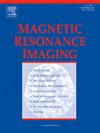ACL MRI术后金属伪影去除自动分割流水线的研究进展
IF 2
4区 医学
Q2 RADIOLOGY, NUCLEAR MEDICINE & MEDICAL IMAGING
引用次数: 0
摘要
磁共振成像(MRI)有潜力通过结合成像信号强度(SI)和愈合前交叉韧带的横截面积测量来识别手术后再撕裂前交叉韧带(ACL)的危险因素。在手术中,为移植和/或缝线插入而钻取骨隧道会产生微碎片。碎片在使用术后MRI评估再损伤风险时存在局限性,因为它在采集过程中引起快速的磁场变化,导致体素内的信号丢失。本研究展示了k均值聚类如何改进自动分割算法,以去除图像中由伪影引起的信号强度值丢失。MRI数据来自参加三项前瞻性ACL手术临床试验的82名患者。术后6个月采集稳态mri的建设性干扰。人工分割前交叉韧带与金属伪影去除作为金标准。通过Dice系数、灵敏度和精密度对ACL自动分割的准确性进行了比较。自动分割的性能与人工分割相当(Dice系数= 0.81,精度= 0.81,灵敏度= 0.82)。自动分割的归一化平均信号强度为1.06(±0.25),手动分割的归一化平均信号强度为1.04(±0.23),差异为2%。这些指标强调了自动分割模型在排除伪区域的同时精确捕获ACL信号强度的能力。这里描述的自动伪影分割模型可以通过允许更准确和更省时的ACL分割来增强qMRI的临床实用性。本文章由计算机程序翻译,如有差异,请以英文原文为准。
Advancement of an automatic segmentation pipeline for metallic artifact removal in post-surgical ACL MRI
Magnetic resonance imaging (MRI) has the potential to identify post-operative risk factors for re-tearing an anterior cruciate ligament (ACL) using a combination of imaging signal intensity (SI) and cross-sectional area measurements of the healing ACL. During surgery micro-debris can result from drilling the osseous tunnels for graft and/or suture insertion. The debris presents a limitation when using post-surgical MRI to assess reinjury risk as it causes rapid magnetic field variations during acquisition, leading to signal loss within a voxel. The present study demonstrates how K-means clustering can refine an automatic segmentation algorithm to remove the lost signal intensity values induced by the artifacts in the image. MRI data were obtained from 82 patients enrolled in three prospective clinical trials of ACL surgery. Constructive Interference in Steady State MRIs were collected at 6 months post-operation. Manual segmentation of the ACL with metallic artifacts removed served as the gold standard. The accuracy of the automatic ACL segmentations was compared using Dice coefficient, sensitivity, and precision. The performance of the automatic segmentation was comparable to manual segmentation (Dice coefficient = .81, precision = .81, sensitivity = .82). The normalized average signal intensity was calculated as 1.06 (±0.25) for the automatic and 1.04 (±0.23) for the manual segmentation, yielding a difference of 2%. These metrics emphasize the automatic segmentation model’s ability to precisely capture ACL signal intensity while excluding artifact regions. The automatic artifact segmentation model described here could enhance qMRI’s clinical utility by allowing for more accurate and time-efficient segmentations of the ACL.
求助全文
通过发布文献求助,成功后即可免费获取论文全文。
去求助
来源期刊

Magnetic resonance imaging
医学-核医学
CiteScore
4.70
自引率
4.00%
发文量
194
审稿时长
83 days
期刊介绍:
Magnetic Resonance Imaging (MRI) is the first international multidisciplinary journal encompassing physical, life, and clinical science investigations as they relate to the development and use of magnetic resonance imaging. MRI is dedicated to both basic research, technological innovation and applications, providing a single forum for communication among radiologists, physicists, chemists, biochemists, biologists, engineers, internists, pathologists, physiologists, computer scientists, and mathematicians.
 求助内容:
求助内容: 应助结果提醒方式:
应助结果提醒方式:


